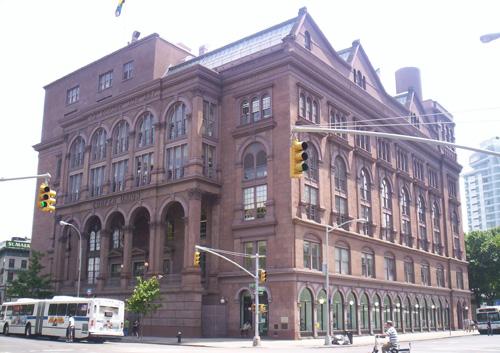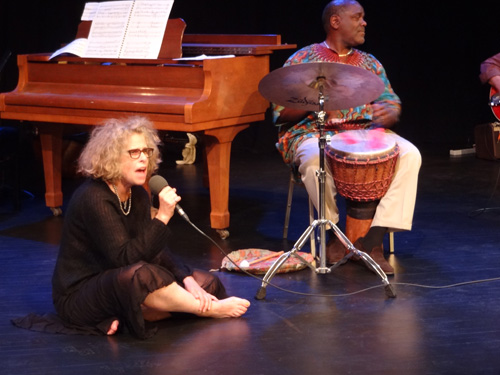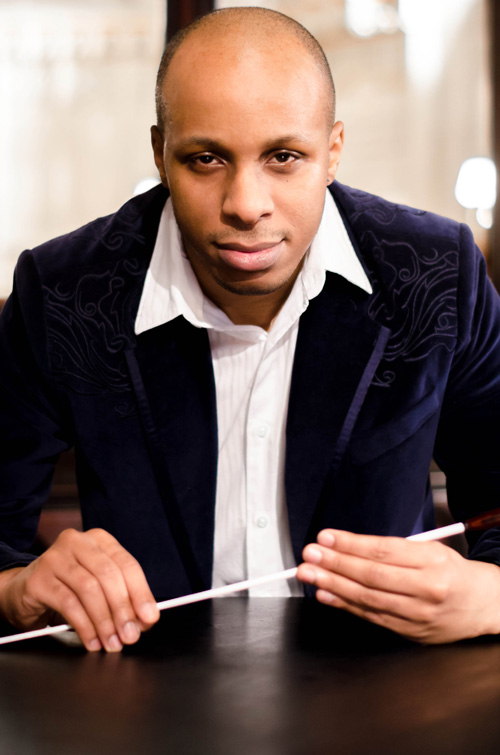Feature: Bill Morgan’s Civil War in New York City

Published in Berkshires Week on June 11, 2014
Original article: http://www.benningtonbanner.com/berkshiresweek/ci_25806813/mayfest-attracts-art
BENNINGTON — “For a person who has a passion for the Civil War, if they find themselves in New York City, they’re not out of luck at all. There are a million things to see,” said Bill Morgan, author of “The Civil War Lover’s Guide to New York City.”
A 35-year New York City resident and lifelong Civil War history buff, Morgan said he slowly gathered information over the years on sites around the city that significantly influenced the war, like the birthplace of Ulysses S. Grant. At Cooper Union, Abraham Lincoln delivered a stirring speech in early 1860 that would help him secure his nomination as the Republican party’s presidential candidate later that year.
Now a Bennington resident, Morgan has compiled his research and photographs into an almost 200-page full-color guidebook tracking down historic places around the city’s five boroughs.
He will speak at the Northshire Bookstore in Manchester at 6 p.m. Saturday, June 14.
At first glance, casual history enthusiasts may not know about New York City’s role in the Civil War, as the city saw no battles in 1861 to 1865 and the Union and Confederate armies never fought in New York state. However, New York was a major cultural center at the time, as well as an important source of men and supplies for the Union forces, so the war left a significant impression on the city. The USS Monitor, the Union’s famous (and first) ironsided warship, was built in Brooklyn. Today, with many buildings from that era still in use, signs of the city’s wartime past are still easy to find.
Morgan looks at the surprising stories behind some sites that history buffs may have overlooked, like the William Shakespeare Memorial in Central Park, which was mostly funded with the proceeds from a production of “Julius Caesar” that starred brothers and Shakespearean actors Edwin, Junius and John Wilkes Booth in 1864. John Wilkes shot Abraham Lincoln less than six months later.
Within a few months, Edwin, a Union supporter, saved the life of Robert Todd Lincoln, the president’s only surviving son.
“You visit Gettysburg and there are 100 guidebooks to the battlefield of Gettysburg, but in New York City there was never anything,” Morgan said.
Seeking to correct that, Morgan has gathered historical background and stories from that time, photographs and archival images related to 157 different historic sites throughout the city, starting in Battery Park at the southern tip of Manhattan and working north, then to the city’s outlying boroughs and the harbor islands.
Although some areas of the city are densely packed with history, Morgan said the book covers an area too large to consider it a walking tour. Visiting all of the sites, he said, would take a dedicated Civil War enthusiast about a week.
Along with the many statues and monuments honoring the heroes of the Civil War, Morgan’s winding tour of the city visits the sites of significant war-era businesses (especially newspapers, lithographers, hotels and saloons), factories, churches, sites of important speeches and the birthplaces and residences of key wartime figures. He also visits several armories where military regiments held drills, and he highlights unexpected places, like the office of a doctor who once treated Thomas “Stonewall” Jackson.
Contemporary photos of these historic buildings also show signs of the evolution of American culture in the 150 years since the war — the New England Hotel where “Camptown Races” and “Oh, Susannah” songwriter Stephen Foster died now houses a beauty salon, and the formerly luxurious St. Nicholas Hotel is now a Lady Foot Locker.
Morgan also includes guides to some of the city’s interesting cemeteries, and highlights interesting Civil War-related artwork and artifacts in New York’s famous museums, like the Metropolitan Museum of Art. Manet’s famous painting “The Kearsarge at Boulogne” shows a battle between the USS Kearsarge and the CSS Alabama off the coast of France.
“The Civil War Lover’s Guide to New York City” is Morgan’s fourth guidebook. He has compiled volumes of places significant to Jack Kerouac, the Beat Generation and other literary figures in New York and San Francisco.
While Civil War history has always been one of his interests, Morgan considers his work with the Beat Generation his life’s work, having served as the personal bibliographer and archivist for influential writers like Allen Ginsberg and Timothy Leary.
“Bill has written on a wide variety of subject matters,” said Mary Allen of the Northshire Bookstore. “He’s very prolific and extremely diverse in his interests, knowledge and expertise.
“Vermont is very fortunate to be home to so much talent and so many talented writers. When we’re able to host a local author of his caliber, we’re eager and happy to be able to host him and put the spotlight on his work.”



Leave a Reply